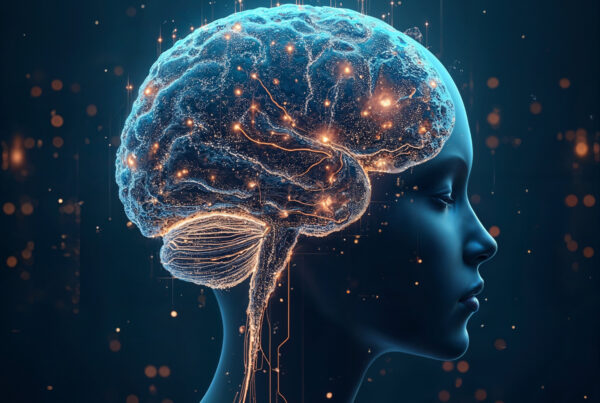Ketamine, traditionally known as an anesthetic, has emerged in recent years as a powerful therapeutic option for rapid relief from severe depressive symptoms and suicidal ideation. Among the most compelling evidence comes from the study titled “The Effect of a Single Dose of Intravenous Ketamine on Suicidal Ideation: A Systematic Review and Individual Participant Data Meta-Analysis” by Wilkinson et al. (2018), which evaluates the impact of a single intravenous (IV) dose of ketamine on patients experiencing suicidal thoughts. This article reviews that study’s design, findings, and clinical implications in a clear, accessible format for both professionals and the broader wellness community.
Study Overview: A Meta-Analytic Approach
The Wilkinson et al. (2018) study gathered data from 10 randomized controlled trials, involving 167 participants diagnosed with major depressive disorder and exhibiting suicidal ideation. The goal was to determine whether a single IV ketamine infusion could meaningfully and rapidly reduce suicidal thoughts—an outcome with high clinical urgency and public health relevance.
A systematic review combined with individual participant data meta-analysis was used to enhance precision and generalizability. The researchers were particularly interested in understanding not just if ketamine worked, but how quickly and how consistently it produced results across different measurement scales.
Highlights and Key Findings
- Rapid Reduction: Suicidal ideation significantly decreased within 24 hours of a single ketamine dose.
- Sustained Effect: The reduction was maintained for up to one week, providing a critical window for further treatment or crisis stabilization.
- Effect Sizes: The measured outcomes showed moderate to large effect sizes (Cohen’s d = 0.48–0.85), reflecting real and noticeable clinical improvement.
- Measurement Sensitivity: Not all tools captured the same effects; some showed more pronounced changes than others, reinforcing the need for multiple assessment methods.
Detailed Results
Both clinician-administered and self-reported measures confirmed a swift decrease in suicidal ideation:
- The Montgomery-Åsberg Depression Rating Scale (MADRS)
- The Hamilton Depression Rating Scale (HAM-D)
- The Quick Inventory of Depressive Symptomatology (QIDS-SR)
However, no statistically significant difference was observed in the Beck Depression Inventory (BDI) suicide item, highlighting variability across measurement tools.
Importantly, the anti-suicidal effects remained significant even after adjusting for overall depression severity, indicating a partially independent mechanism at work.
Mechanisms Behind Ketamine’s Effects
 Ketamine’s ability to reduce suicidal ideation appears to extend beyond traditional antidepressant pathways. Studies suggest it may work by:
Ketamine’s ability to reduce suicidal ideation appears to extend beyond traditional antidepressant pathways. Studies suggest it may work by:
- Enhancing neuroplasticity, the brain’s capacity to form new neural connections.
- Modulating the glutamatergic system, especially through NMDA receptor antagonism.
- Stimulating brain-derived neurotrophic factor (BDNF) release.
In preclinical models, (R)-ketamine has shown to rapidly reverse stress-induced structural changes in the brain. For instance, Zhang et al. (2019) demonstrated that ketamine rapidly restored spine density in brain regions associated with mood regulation in mice subjected to chronic stress.
Clinical Implications: Beyond Symptom Management
The study underscores ketamine’s unique and time-sensitive role in crisis intervention:
- Offers immediate relief for individuals in acute suicidal crisis.
- Functions through mechanisms beyond traditional mood enhancement, potentially providing a new treatment modality.
- May buy time for long-term interventions (such as psychotherapy or pharmacotherapy) to take effect.
This therapeutic window—lasting up to a week—could be a lifesaving bridge during high-risk periods.
Cautions and Considerations
While promising, the researchers emphasize that:
- These results require confirmation in broader and more diverse populations, including those with co-occurring psychiatric conditions.
- Long-term safety, especially with repeated dosing, remains a key concern.
- Clinical protocols should include comprehensive risk assessments and follow-up care.
Also, ketamine is not a first-line treatment and must be administered in controlled medical environments due to its dissociative properties and potential for misuse.
Comparison to Other Research
Other studies support the effectiveness of ketamine for depression and mood disorders:
- Dore et al. (2019) reported substantial benefits of ketamine-assisted psychotherapy (KAP) in clinical settings.
- Lara et al. (2013) observed mood-stabilizing and cognitive-enhancing effects with very low doses of sublingual ketamine.
- Zarate et al. (2006) demonstrated that ketamine significantly improved symptoms in treatment-resistant major depression.
These complementary studies strengthen the case for ketamine’s versatility and efficacy, particularly in urgent clinical scenarios.
Conclusion: A Breakthrough in Suicide Prevention
The findings from Wilkinson et al. (2018) reinforce ketamine’s revolutionary potential in mental health care. A single intravenous dose can sharply reduce suicidal ideation in less than 24 hours—an outcome unmatched by current standard treatments. As the mental health field continues to evolve, ketamine offers not only a rapid-acting option but a possible paradigm shift in how we address suicide risk in clinical settings.
As research advances, future studies should aim to answer long-term questions regarding repeated use, ideal dosing schedules, and integration with other treatments. Nonetheless, the current evidence positions ketamine as a critical tool in the fight against suicide.
References
- Wilkinson ST, Ballard ED, Bloch MH, Mathew SJ, Murrough JW, Feder A, Sos P, Wang G, Zarate CA Jr, Sanacora G. The Effect of a Single Dose of Intravenous Ketamine on Suicidal Ideation: A Systematic Review and Individual Participant Data Meta-Analysis. Am J Psychiatry. 2018;175(2):150–158. doi:10.1176/appi.ajp.2017.17040472.
- Dore J, Turnipseed B, Dwyer S, et al. Ketamine Assisted Psychotherapy (KAP): Patient Demographics, Clinical Data and Outcomes in Three Large Practices Administering Ketamine with Psychotherapy. J Psychoactive Drugs. 2019;51(2):189-198. doi:10.1080/02791072.2019.1587556.
- Lara DR, Bisol LW, Munari LR. Antidepressant, mood stabilizing, and procognitive effects of very low dose sublingual ketamine in refractory unipolar and bipolar depression. Int J Neuropsychopharmacol. 2013;16(9):2111-2117. doi:10.1017/S1461145713000485.
- Zhang J, Qu Y, Chang L, Pu Y, Hashimoto K. (R)-Ketamine Rapidly Ameliorates the Decreased Spine Density in the Medial Prefrontal Cortex and Hippocampus of Susceptible Mice After Chronic Social Defeat Stress. Int J Neuropsychopharmacol. 2019;22(10):675-679. doi:10.1093/ijnp/pyz048.
Zarate CA, Singh JB, Carlson PJ, et al. A Randomized Trial of an N-methyl-D-aspartate Antagonist in Treatment-Resistant Major Depression. Arch Gen Psychiatry. 2006;63(8):856–864. doi:10.1001/archpsyc.63.8.856.




